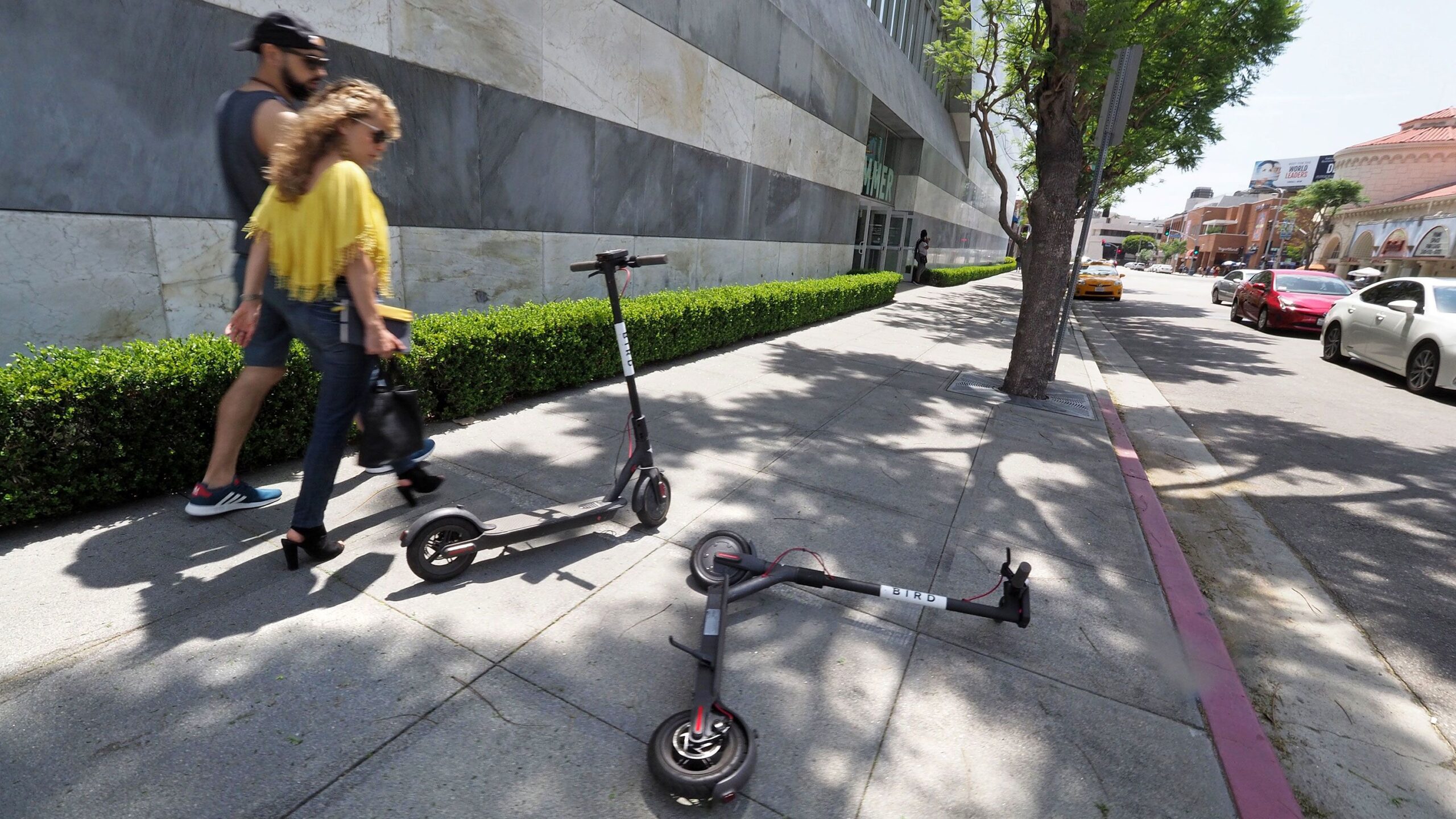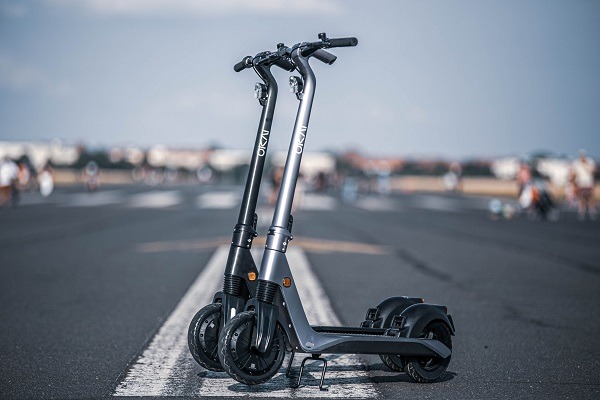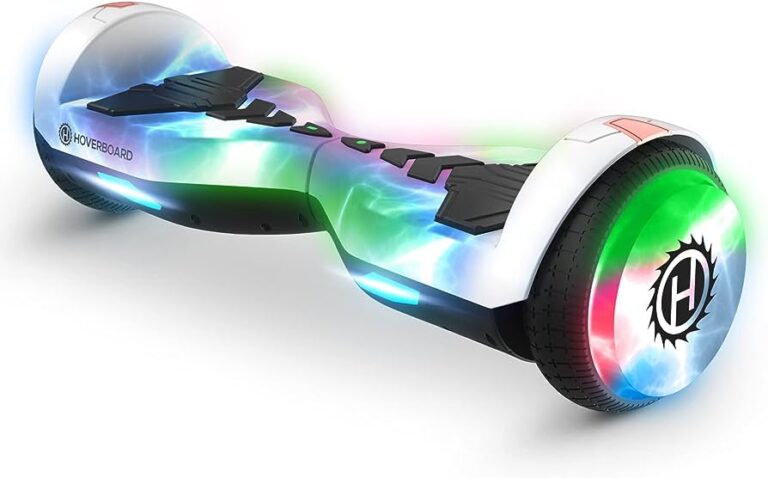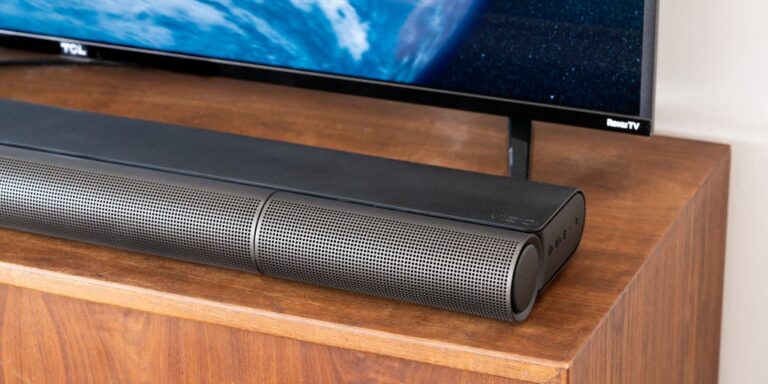Scooter Not Firing: Troubleshooting Tips to Ignite Your Ride

Scooter not firing? Check spark plugs and fuel supply for potential issues.
If your scooter is not firing, it might be due to problems with the spark plugs or fuel supply. Ensure the spark plugs are clean and properly connected, and check that the fuel tank is filled with clean fuel. Additionally, examine the fuel lines and make sure they are not clogged or damaged.
If these basic checks do not solve the issue, it may be best to consult a professional mechanic for further diagnosis and repairs. Remember to regularly maintain your scooter to prevent such issues from arising in the future.

Credit: www.electricscooterinsider.com
How Does The Ignition System Work?
The ignition system in a scooter is responsible for firing the spark plug, which is essential for starting the engine. If your scooter is not firing, it could be due to issues with the ignition coil, spark plug, or the wiring connecting these components.
Make sure to check these areas for any potential faults.
Your scooter not firing up can be frustrating, but understanding how the ignition system works can help you diagnose and fix the issue. The ignition system is responsible for creating the spark that ignites the fuel-air mixture in the combustion chamber, powering the engine and getting your scooter running smoothly.
Let’s dive into the details of this crucial system.
The Role Of The Spark Plug:
- The spark plug plays a vital role in the ignition system. It creates the spark needed to ignite the fuel-air mixture in the combustion chamber.
- When the engine’s piston is at the top of its compression stroke, the spark plug sends an electric current across the gap, causing a spark to ignite the mixture.
- A properly functioning spark plug ensures efficient combustion, leading to optimal engine performance and fuel efficiency.
Components Of The Ignition System:
- Ignition coil: The ignition coil converts the low-voltage electrical system into a high-voltage spark needed to ignite the fuel-air mixture.
- Battery: The battery supplies the initial electrical energy required by the ignition system.
- Ignition switch: The ignition switch controls the flow of electrical power to the ignition system, allowing you to start and stop the scooter.
- Capacitor discharge ignition (CDI) unit: The CDI unit stores electrical energy from the battery and releases it in a controlled manner to create a spark at the spark plug.
Importance Of A Properly Functioning Ignition System:
- Efficient combustion: A well-maintained ignition system ensures that the spark plug delivers the necessary spark at the right time, leading to proper combustion and smooth engine operation.
- Fuel efficiency: When the ignition system is in good working condition, the fuel-air mixture ignites efficiently, resulting in better fuel economy.
- Smooth starting: A properly functioning ignition system provides a consistent and reliable spark, enabling your scooter to start smoothly and without any issues.
- Engine performance: A malfunctioning ignition system can lead to misfires, rough idling, and decreased power output. Keeping the ignition system in optimal condition ensures peak engine performance.
Understanding how the ignition system works and knowing the importance of its components can help you troubleshoot and address any issues that may arise with your scooter’s firing. Regular maintenance and periodic inspections of the ignition system can help prevent problems and keep your scooter running smoothly.
Signs Of A Faulty Ignition System
A faulty ignition system can be indicated if your scooter is not firing. Look for signs such as difficulty starting, engine misfires, or unresponsive spark plugs. Keep an eye out for any unusual noises or smells, as these can also be indicators of ignition system issues.
Difficulty starting the scooter:
- Scooter fails to start or requires multiple attempts before firing.
- Ignition switch feels loose or unresponsive.
- The engine cranks but does not start.
- Ignition key does not turn smoothly or gets stuck.
Loss of power or poor acceleration:
- The scooter lacks power and struggles to pick up speed.
- Sluggish acceleration and reduced top speed.
- Engine cuts out or stalls while riding.
- Increased fuel consumption and decreased mileage.
Engine misfires or backfires:
- Irregular firing of the engine, resulting in jerky movement.
- Loud popping or banging noise from the exhaust.
- Reduced engine performance and rough idle.
- Strong smell of gasoline or a noticeable increase in exhaust smoke.
If you are experiencing any of these issues with your scooter, it is likely that your ignition system is faulty. Ignition system problems can lead to a variety of performance issues and should be addressed promptly to avoid further damage.
In the following sections, we will explore each of these signs in more detail and provide possible causes and solutions for each problem.
Step 1: Checking The Spark Plug
If your scooter is not firing, the first step is to check the spark plug. Ensure it is in good condition and properly connected to troubleshoot the issue effectively.
When your scooter fails to start, the first thing you should do is inspect the spark plug. The spark plug plays a crucial role in the ignition process, so if it’s damaged or worn out, it could be causing the issue.
Follow the steps below to properly inspect, clean or replace, and gap the spark plug.
Inspecting The Spark Plug For Damage:
- Start by locating the spark plug. It is usually situated on the side or top of the engine cylinder.
- Carefully remove the spark plug wire by gently pulling on the boot. Avoid yanking it forcefully to prevent damage.
- Examine the condition of the spark plug, paying close attention to the electrode and insulator. Look for any signs of wear, such as cracks, deposits, or a worn-out electrode tip.
- If you notice any damage or excessive wear, it’s time to clean or replace the spark plug.
Cleaning Or Replacing The Spark Plug If Necessary:
- Begin by cleaning the spark plug using a wire brush. Gently scrub away any dirt, oil, or carbon deposits from the electrode and insulator.
- Inspect the spark plug after cleaning. If it appears to be in good condition, you can reinstall it back into the engine. However, if the damage is severe or the spark plug is old, it’s best to replace it with a new one.
- Ensure that you use the correct spark plug recommended by the manufacturer for your scooter’s make and model.
Properly Gapping The Spark Plug:
- Every spark plug has a specific gap that determines the size of the spark produced. It’s important to ensure the proper gap to maintain optimal engine performance.
- Use a spark plug gap tool to measure the gap between the center electrode and the ground electrode. Adjust the gap as per the manufacturer’s specifications by carefully bending the ground electrode.
- Avoid excessive bending, as it can weaken or break the spark plug.
- Once you’ve properly gapped the spark plug, reinsert it into the engine and firmly attach the spark plug wire boot.
By following these steps and properly checking the spark plug, you can eliminate it as a potential issue if your scooter is not firing up. If the problem persists even after inspecting, cleaning, and gapping the spark plug, it may be necessary to explore other possibilities or seek professional assistance.
Step 2: Testing The Ignition Coil
To diagnose a scooter not firing issue, step 2 involves testing the ignition coil. This crucial step helps determine if the ignition coil is functioning properly and potentially solves the problem. Follow the instructions carefully to troubleshoot and resolve the issue effectively.
Understanding The Role Of The Ignition Coil
The ignition coil is a critical component in your scooter’s ignition system. It is responsible for transforming the low voltage from your battery into a high voltage that ignites the fuel mixture in the combustion chamber. This spark is what ultimately powers your scooter’s engine.
If your scooter is not firing or experiencing misfires, it could indicate a faulty ignition coil. Understanding the role of the ignition coil is essential in diagnosing and fixing this issue.
How To Test The Ignition Coil With A Multimeter
To determine if the ignition coil is the culprit behind your scooter not firing, you can perform a simple test using a multimeter. Here’s how you can go about it:
- Start by locating the ignition coil. It is usually situated near the engine and connected to the spark plug wire.
- Disconnect the spark plug wire from the ignition coil. This ensures that there is no spark being generated during the test, preventing any accidents.
- Set your multimeter to the ohms (Ω) setting.
- Connect the multimeter leads to the ignition coil’s primary terminals. These terminals are usually labeled “Positive” and “Negative” or “+” and “-“. Ensure a secure connection between the multimeter leads and the terminals.
- Read the multimeter display. It should ideally show a resistance between 0.4 and 2 ohms. If the reading falls outside this range or shows as infinite resistance, it indicates a faulty ignition coil that needs to be replaced.
Replacing A Faulty Ignition Coil
If testing the ignition coil confirms that it is indeed faulty, it’s time to replace it. Here’s a step-by-step guide on how to do it:
- Begin by disconnecting the negative terminal of your scooter’s battery to ensure safety.
- Locate the faulty ignition coil and disconnect any wires connected to it.
- Remove any mounting bolts or screws holding the ignition coil in place. Take note of their arrangement for reassembly later.
- Gently pull out the old ignition coil, being cautious not to damage any surrounding components.
- Take your new ignition coil and align it with the mounting holes, ensuring that any gaskets or seals are in place.
- Insert and secure the mounting bolts or screws to hold the new ignition coil in place.
- Reconnect any wires that were previously disconnected, ensuring a secure and proper connection.
- Finally, reconnect the negative terminal of your scooter’s battery.
- Start your scooter and test it to confirm if the new ignition coil has resolved the firing issue.
Remember, if you’re unsure or uncomfortable with performing the ignition coil replacement yourself, it’s always best to seek professional assistance to ensure the correct installation and optimal scooter performance.
Step 3: Examining The Fuel System
Step 3: Examining the fuel system is crucial when troubleshooting a scooter that is not firing. By carefully inspecting the fuel line, filter, and carburetor, you can identify and resolve issues that may be causing the problem, restoring the scooter’s functionality.
Is your scooter giving you trouble starting? Don’t worry, we’ve got you covered! In this step, we will dive into the fuel system to identify any potential issues. Let’s get started!
Checking Fuel Levels And Fuel Quality:
- Start by checking the fuel level in your scooter’s tank. If it’s too low, your scooter might not fire up. Top up the tank if necessary.
- Additionally, make sure the fuel you’re using is fresh and not contaminated. Old or dirty fuel can clog the fuel system and lead to starting problems.
Inspecting The Fuel Filter And Fuel Lines:
- Locate the fuel filter in your scooter’s fuel system. It’s usually found between the fuel tank and the carburetor.
- Remove the fuel filter and inspect it thoroughly. If it appears dirty or clogged, it’s time to replace it with a new one.
- Next, visually inspect the fuel lines for any signs of cracks, leaks, or blockages. Replace any damaged or deteriorated fuel lines as needed.
Cleaning Or Replacing The Carburetor:
- The carburetor plays a vital role in delivering the correct fuel-air mixture to the engine. Over time, it can become clogged or worn out, leading to starting issues.
- Start by cleaning the carburetor using a carburetor cleaner. Follow the manufacturer’s instructions and ensure all the tiny passages are clear of debris.
- If cleaning doesn’t resolve the issue, consider replacing the carburetor with a new one. This will ensure optimal fuel delivery and improve starting performance.
Remember, a well-maintained fuel system is essential for your scooter’s smooth operation. By following these steps and conducting regular inspections, you can troubleshoot and resolve starting problems effectively.
Now that we’ve examined the fuel system, it’s time to move on to the next step: Step 4 – Checking the Ignition System. Stay tuned for more troubleshooting tips!
Regular Maintenance For The Ignition System
Regular maintenance is crucial for ensuring your scooter’s ignition system is in top condition. If your scooter is not firing, it may be due to issues with the ignition system. Keep your scooter running smoothly by performing regular maintenance on the ignition system.
Regular maintenance of your scooter’s ignition system is crucial for ensuring that your scooter fires up every time. Ignition-related issues can lead to frustrating situations, leaving you stranded on the side of the road. Don’t worry, though! By following some simple maintenance practices, you can keep your scooter’s ignition system in top shape.
Let’s dive into the key areas of regular maintenance for the ignition system.
Importance Of Regular Spark Plug Inspection And Replacement
- Regularly inspect your spark plug to ensure it’s in optimal condition.
- Look out for signs of wear, such as excessive carbon build-up, electrode corrosion, or a worn-out center electrode.
- Replace the spark plug when necessary to avoid misfires and poor combustion.
- A fresh spark plug helps maintain a consistent spark, leading to better fuel efficiency and smoother acceleration.
- Refer to your scooter’s manual for the recommended spark plug replacement intervals.
Cleaning And Maintaining The Ignition Coil
- The ignition coil plays a vital role in generating the electrical spark required to ignite the fuel-air mixture in the engine.
- Clean the ignition coil regularly to prevent dirt, debris, or oil buildup that can affect its performance.
- Use a soft brush or compressed air to gently remove any contaminants from the ignition coil.
- Check the coil for any signs of physical damage, such as cracks or leaks, and replace it if necessary.
- Keeping the ignition coil clean and well-maintained ensures a reliable spark for a smooth start every time.
Checking And Cleaning Electrical Connections
- Regularly inspect all electrical connections related to the ignition system, including the plug wires, connectors, and terminals.
- Ensure that the connections are secure and free from dirt, corrosion, or any loose connections.
- Clean the connections using a contact cleaner or a solution of warm water and baking soda, if needed.
- Make sure to dry the connections thoroughly before reassembling.
- Clean and well-connected electrical components facilitate a consistent flow of electricity, promoting efficient ignition system performance.
Remember, regular maintenance of the ignition system is vital to avoid any unwanted surprises when starting up your scooter. By inspecting and maintaining key components such as the spark plug, ignition coil, and electrical connections, you can ensure a reliable and smooth firing scooter.
Implement these maintenance practices, and you’ll have a well-performing ignition system to rely on. Happy riding!
Upgrading The Ignition System For Better Performance
Upgrade your scooter’s ignition system to enhance its performance and resolve firing issues. Improve the efficiency of your scooter’s engine, ensuring a smoother and more reliable ride.
Is your scooter not firing up as it should? It could be time to consider upgrading your ignition system to boost its overall performance. Upgrading key components of the ignition system, such as the spark plug, ignition coil, and installing an ignition performance module, can make a notable difference in your scooter’s efficiency and power output.
In this section, we will explore the benefits of upgrading to a high-performance spark plug, the advantages of an aftermarket ignition coil, and the process of installing an ignition performance module.
Benefits Of Upgrading To A High-Performance Spark Plug:
- Enhanced ignition efficiency: A high-performance spark plug ensures better combustion, leading to improved ignition efficiency and smoother engine operation.
- Increased power and acceleration: The improved spark from a high-performance spark plug ignites the fuel mixture more effectively, resulting in increased power output and better acceleration.
- Better fuel economy: With a more efficient combustion process, a high-performance spark plug can optimize fuel consumption, potentially leading to better mileage for your scooter.
- Durability and longevity: High-performance spark plugs are often designed to be more durable, with materials and construction that can withstand the demands of high-performance engines, ensuring a longer lifespan.
Advantages Of An Aftermarket Ignition Coil:
- Stronger and more consistent spark: An aftermarket ignition coil can provide a stronger and more consistent spark compared to stock ignition coils. This helps in achieving optimal engine performance and smooth operations.
- Improved ignition timing: Aftermarket ignition coils offer precise control over the ignition timing, allowing for better synchronization with the engine’s requirements. This can result in enhanced power delivery and overall performance.
- Increased durability: Upgraded ignition coils are often built with high-quality materials, providing increased durability and reliability even under demanding conditions. This translates to a longer lifespan and reduced maintenance needs.
- Compatibility with aftermarket modifications: If you have made other performance upgrades to your scooter, such as a high-performance exhaust system or a tuned carburetor, aftermarket ignition coils are designed to work seamlessly with these modifications, optimizing their potential.
Installing An Ignition Performance Module:
- Plug and play installation: Many ignition performance modules are designed for easy installation, requiring no advanced technical skills or modifications to the existing wiring system. They typically connect directly to the ignition coil or the stock wiring harness.
- Increasing ignition voltage: Ignition performance modules can boost the voltage delivered to the ignition coil, resulting in a more powerful spark. This leads to improved combustion and enhanced engine performance.
- Fine-tuning ignition timing: Some ignition performance modules allow for fine adjustments to the ignition timing, allowing you to optimize the ignition system’s performance for your specific scooter and riding style.
- Potential for additional features: Depending on the specific module, you may also gain access to additional features like rev limiter adjustment, launch control, or other performance-enhancing options, further customizing your scooter’s ignition system.
Upgrading your scooter’s ignition system with a high-performance spark plug, aftermarket ignition coil, and an ignition performance module can significantly enhance its overall performance. Whether you’re looking for improved acceleration, fuel efficiency, or smoother engine operation, these upgrades can make a noticeable difference.
So, consider taking the leap and unlock the full potential of your scooter’s ignition system.
Preventive Measures For Ignition System Issues
Prevent ignition system issues with these simple preventive measures to ensure your scooter is firing properly. Regularly check spark plugs, clean air filters, and maintain fuel system cleanliness to avoid any firing problems. Implementing these steps can help prolong the life of your scooter’s ignition system.
Scooter Not Firing:
Is your scooter experiencing ignition problems? Don’t worry! We have compiled a list of preventive measures that will help keep your ignition system in top shape. By following these simple steps, you can avoid potential issues and ensure a smooth ride every time.
Keeping The Scooter Clean And Free Of Debris:
- Regularly check your scooter’s ignition system for any dirt, dust, or debris that may have accumulated.
- Clean the ignition components using a soft cloth or a brush to remove any buildup.
- Pay special attention to the spark plug, as it is crucial for the firing process.
Using High-Quality Fuel And Additives:
- Always use good quality fuel that meets the manufacturer’s recommendations.
- Avoid using old or contaminated fuel, as it can lead to poor ignition performance.
- Consider using fuel additives designed to clean the fuel system and optimize combustion.
Storing The Scooter Properly During Periods Of Inactivity:
- If you’re not planning to use your scooter for an extended period, take the necessary steps to store it properly.
- Clean the scooter thoroughly, paying attention to the ignition system.
- Disconnect the battery or use a battery tender to maintain its charge.
- Consider using a fuel stabilizer to prevent fuel degradation.
- Store the scooter in a cool, dry place to avoid any moisture-related issues.
By implementing these preventive measures, you can minimize the chances of encountering ignition system problems with your scooter. Remember, regular maintenance and care are essential for ensuring optimal performance and longevity. Happy riding!
Frequently Asked Questions For Scooter Not Firing
Why Is My Scooter Cranking But Not Starting?
There could be several reasons why your scooter is cranking but not starting.
What To Do If Your Moped Won’T Kick Start?
If your moped won’t kick start, first check the fuel, battery, spark plug, and carburetor. Make sure everything is clean and functioning properly.
How Do I Fix No Spark?
To fix no spark, check spark plug connections, replace spark plugs, inspect ignition coil, and ensure proper fuel mixture.
How Do You Check Spark On A Scooter?
To check the spark on a scooter, follow these steps: 1. Disconnect the spark plug wire from the spark plug. 2. Remove the spark plug from the scooter engine. 3. Reconnect the spark plug wire to the spark plug. 4. Ground the spark plug against the scooter’s engine.
5. Start the scooter’s engine and check for a spark between the spark plug electrodes. Note: A strong spark indicates a healthy ignition system, while a weak or no spark may indicate a problem that needs further investigation.
Conclusion
Overall, troubleshooting a scooter that is not firing can be a complex process. However, by implementing the steps outlined in this blog post, you can increase your chances of identifying and resolving the issue. Start by checking the spark plug and ignition system, as these are often the culprits behind firing problems.
Clean or replace any faulty components as needed. It’s also important to inspect the fuel system, ensuring that it is delivering the proper amount of fuel to the engine. Additionally, don’t overlook the possibility of electrical issues or a clogged air filter, as these can also affect a scooter’s firing capabilities.
Remember to consult the manufacturer’s manual for specific troubleshooting instructions for your scooter model. With patience and attention to detail, you’ll be able to get your scooter firing again and back on the road in no time. Happy troubleshooting!






